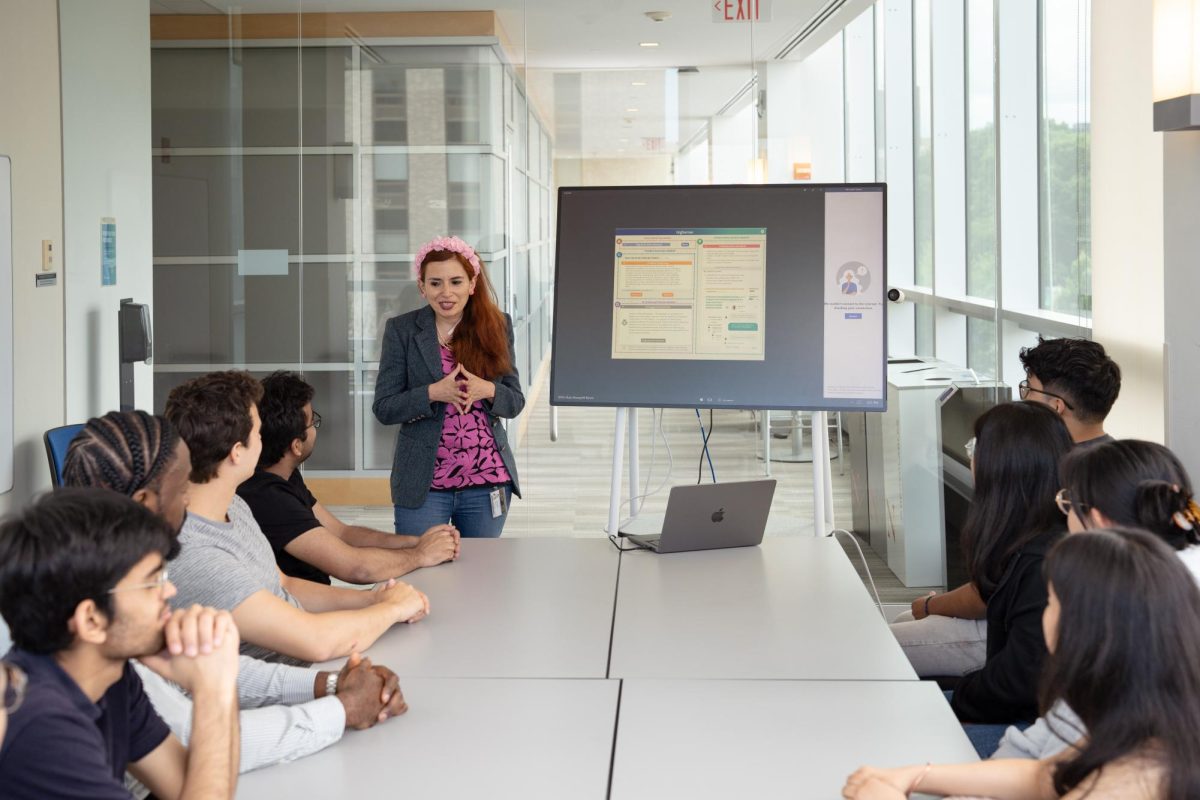By Gus Castillo, news correspondent
The Marine Science Center at Northeastern held its annual open house, giving the public an opportunity to have a look at the latest research being performed at the Center.
The cloudy, irritable weather did not prevent visitors from attending the Marine Science Center’s annual open house, hosted off the coast of Nahant, a town 40 minutes north of Boston. The open house allowed visitors to explore the latest developments in the Center’s research.
“This is my fifth year doing open houses, and this one is definitely four times bigger than the smallest one,” Outreach Program Coordinator Carole McCauley, said.
Members of the surrounding community and the students of Northeastern were invited to explore the facilities, in hopes that those who visit may learn about different types of research.
Beyond the research, there were also other activities, such as painting and marine life touch tank targeted towards younger children and project boards explaining research done at the Center.
“We have a primary goal of inspiring the next generations of marine biologists,” McCauley said, “and are really interested in communicating the research we do here”.
The Marine Science Center was founded in 1967 under the leadership of Dr. Nathan “Doc” Riser, and built land that was once occupied by both a hotel and a military base. Now, the Center is home to research that has had a global impact.
“In the early years, a lot of research was orientated around the local ecology, and it is still that way now,” McCauley said. “However, through the growth of marine engineering, research has expanded to answering concerns cities around the world have with the rise of global climate change.”
The Center is currently working on the OGL program, or the Ocean Genome Legacy Program (OGL program). Researchers at the Center are trying to create a database for all sea species across the globe.
“A public library has books, books that people can borrow, get information from and do research on,” Staff Scientist Timery DeBoer said. “What we have is DNA in our bank, or our library, that we can loan out to scientists to do research.”
As reported by Timery, there are over 25,000 described marine species, and less than 2 percent have been recorded.
“If we can make it public, and since we usually ask for something the size of a pea, then 10 or even 100 scientists can use these samples, and lower the cost of research significantly,” Timery said.
The OGL also leads research in developing biofuels from symbiotic worms found in the ocean.
“It’s got two main purposes of the program, to collect DNA from endangered and other species, and to perform geo-mining on shipworms,” David Stein, a grad student doing his masters research in marine biology, said.
Another notable program focuses on creating better coastal communities for both humans and sea life through the Urban Coastal Sustainability program. One highlight of this program is Mission 31.
“One of our researchers spent two weeks in a school bus-sized underwater research habitat…that’s an example of a teachable moment,” McCauley said.
The Center also provides the students of Northeastern the opportunity to work first hand with researchers in the marine biology field.
“For me, as an undergraduate, it provided an opportunity to do a bunch of credit hours, meet a bunch of people and do it in an interactive way,” junior marine biology major student Lauren Josephs said.
“The Center strives to do research and better student’s experience at Northeastern, trying to give them the biggest bang for their buck,” marine biology lab assistant Brady Miles said.
As for the future goals of the Marine Center, McCauley has high hopes.
“There’ll be advances in research, we’ll have new students, new professors, and there will definitely be new things to show next year, however, the main focus is to inspire,” McCauley said.
McCauley advises that students of the Northeastern community to visit the Center, be it through classes, club outings or open house activities.
Photo by Maria Amasanti, Northeastern University















